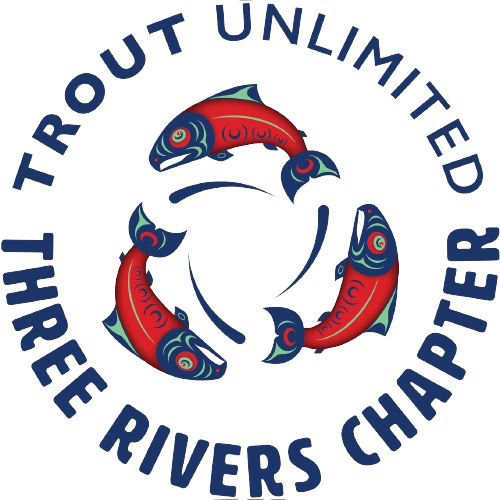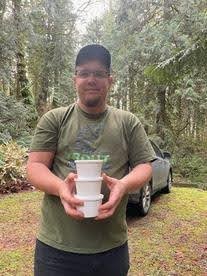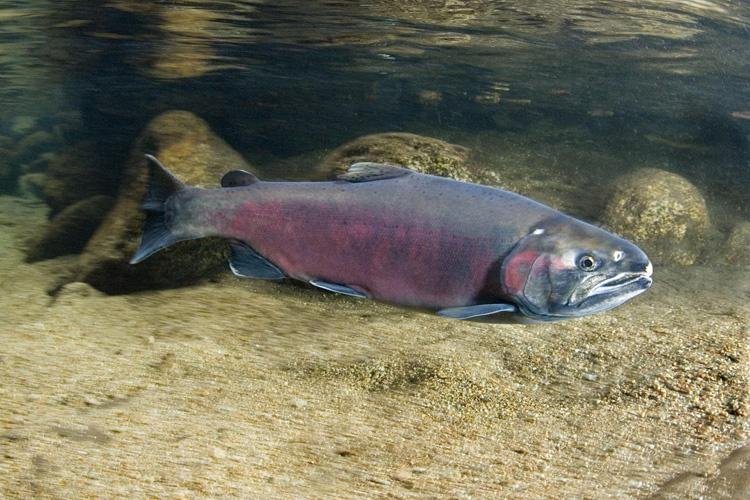Captive Kokanee Yield Thousands of Fertilized Eggs, Promising Record Fry Release in 2024
Tray of fertilized kokanee eggs
Investments in the kokanee captive brood stock and hatchery supplementation programs are paying off. Nearly 18,000 kokanee eggs successfully fertilized and “eyed” during the first stage of salmon development this past January. Thanks to the technology of cryo-banking and expertise of King County’s Environmental Lab, kokanee milt, or sperm, collected in prior years fertilized eggs from the current year, helping to maintain the genetic diversity of our unique Lake Sammamish Late-Run Kokanee for years to come.
Kokanee Returns Improved in Fall 2023
Kokanee salmon in spawning colors
In January, the Kokanee Technical Committee reviewed spawning survey results and developed the final 2023/24 estimates of 279 spawning kokanee in Lake Sammamish, which is three times greater than the 2022/23 return of 81 spawning kokanee. While 279 is an improvement, the estimate is still in the low abundance zone for the population.
Remote Stream Incubators at Work - Thank You, Trout Unlimited!
Photo featuring Dave Kyle, Lake Washington Basin Program Manager of Trout Unlimited
Our KWG partner, Dave Kyle of Trout Unlimited, spent his New Year’s Day in the field, planting over 1,300 freshly fertilized kokanee eggs in a remote stream incubator on Zackuse Creek. By reintroducing kokanee in Zackuse Creek, the aim is to jumpstart recolonization following a culvert replacement that now allows access to the upstream portion of the creek. Signs appear positive as nine spawning kokanee were counted returning to Zackuse Creek this past season. Thank you, Dave, for your tireless efforts operating remote stream incubators to bring late-run kokanee back to their historic creeks. The next generation of kokanee are in good hands!






